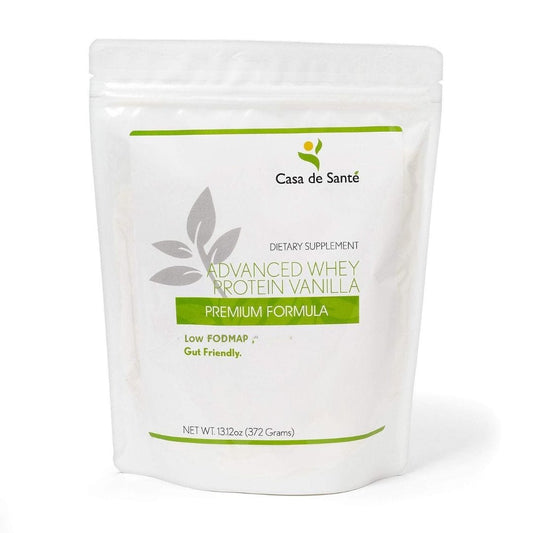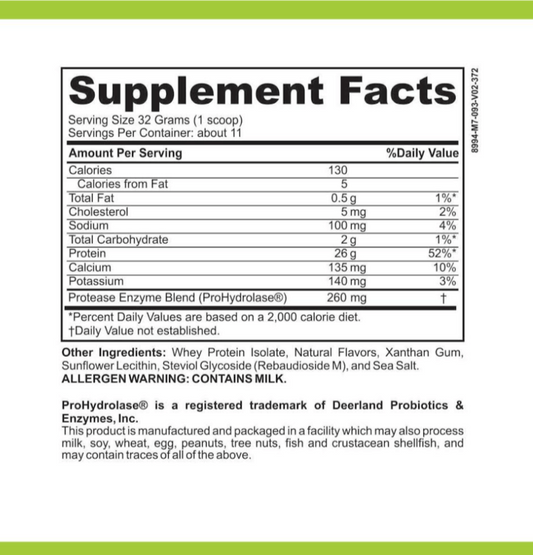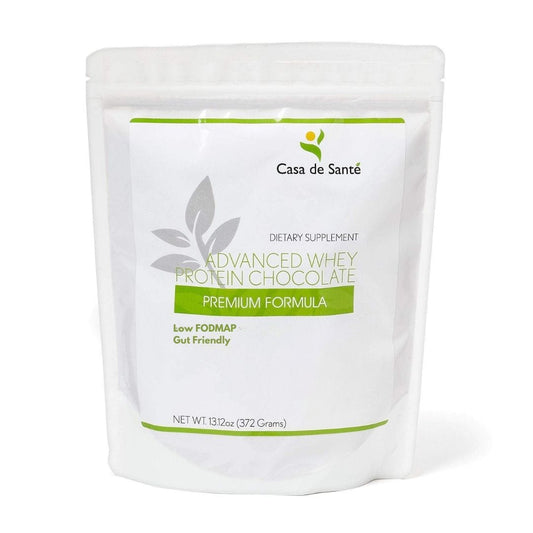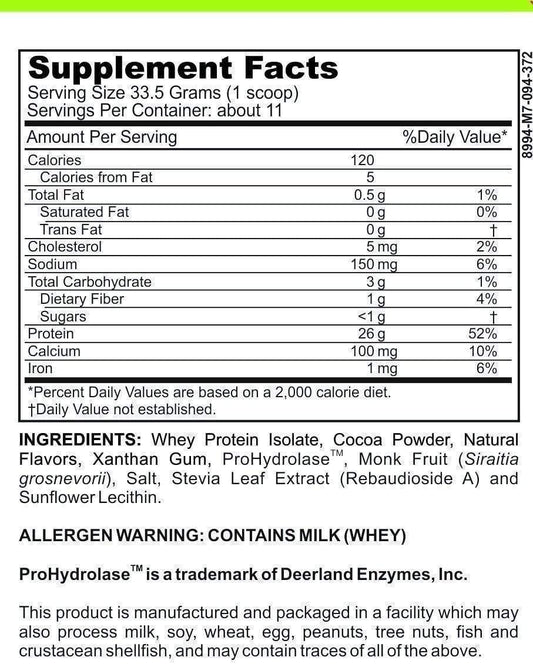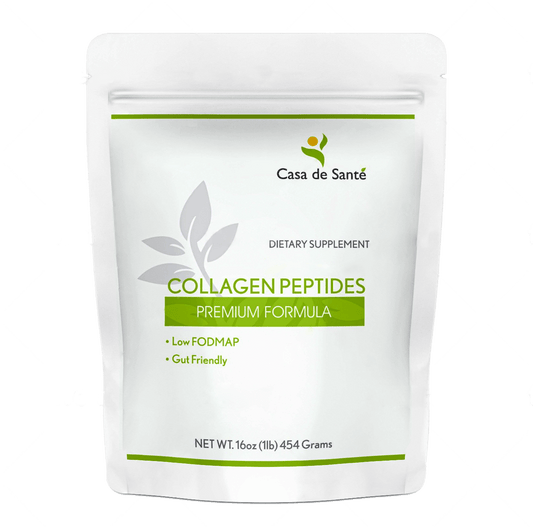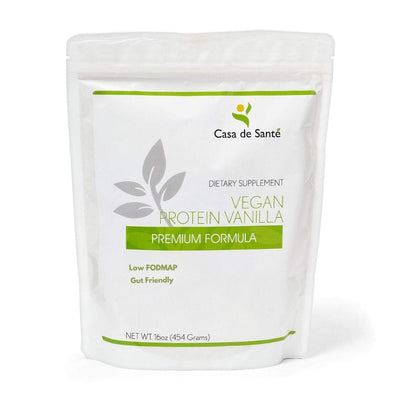The FAILSAFE Diet (RPAH Diet): How to Avoid Unhealthy Food Chemicals
The FAILSAFE Diet (RPAH Diet): How to Avoid Unhealthy Food Chemicals
Food chemicals are added to many processed foods to enhance flavors, colors, and textures or to preserve freshness. But what most people don't realize is that these chemicals can be harmful to our health, causing a range of symptoms from migraines and eczema to behavioral problems and autoimmune disorders. The FAILSAFE diet, also known as the RPAH (Royal Prince Alfred Hospital) elimination diet, is a structured eating plan designed to help people avoid unhealthy food chemicals and improve their health. In this article, you'll learn everything you need to know about the FAILSAFE diet, from its history and development to tips for success and expert advice for achieving optimal health on a chemical-free diet.
What are food chemicals and why are they harmful to our health?
Food chemicals are synthetic or naturally occurring substances added to food to improve its taste, appearance, and shelf life. Some common food chemicals include artificial flavors and colors, MSG (Monosodium Glutamate), and preservatives like BHA (Butylated Hydroxyanisole) and BHT (Butylated Hydroxytoluene). While these chemicals make food look and taste better, research has shown that they can have adverse effects on our health.
Food chemicals can trigger a range of symptoms, such as headaches, skin rashes, asthma, and digestive problems, in susceptible individuals. In some cases, food chemicals can also exacerbate existing health conditions, such as ADHD, autism, and autoimmune disorders. By eliminating these chemicals from your diet, you may experience significant health improvements and reduce your risk of chronic disease.
It is important to note that not all food chemicals are harmful. Some natural food chemicals, such as antioxidants and vitamins, can actually have health benefits. Additionally, some synthetic food chemicals have been extensively tested and deemed safe for consumption by regulatory agencies. However, it is still important to be aware of the potential risks associated with certain food chemicals and to make informed choices about the foods we consume.
The history and development of the FAILSAFE diet
The FAILSAFE diet was developed by Dr. Sue Shepherd and Dr. Peter Gibson at the RPAH in Sydney, Australia. The diet was originally designed to treat people with irritable bowel syndrome (IBS) by eliminating foods that commonly trigger symptoms, such as wheat, dairy, and high FODMAP foods.
Later, the FAILSAFE diet was expanded to include the elimination of food chemicals, as the RPAH team found that many people with IBS and other health conditions also had chemical sensitivities. The diet has since gained popularity for people with food intolerances or allergies, as well as those looking to improve their overall health by avoiding harmful food chemicals.
The FAILSAFE diet is based on the principle of avoiding foods that contain certain chemicals, such as artificial colors, flavors, and preservatives. These chemicals are known to cause adverse reactions in some people, including headaches, skin rashes, and digestive issues. By eliminating these chemicals from their diet, people can experience significant improvements in their health and wellbeing.
Understanding the principles of the RPAH elimination diet
The RPAH elimination diet is a strict eating plan that involves avoiding certain foods for a period of time to identify food sensitivities or intolerances. The diet is divided into two phases: the elimination phase and the reintroduction phase.
The elimination phase typically lasts for 2-6 weeks and involves avoiding a range of foods, including high FODMAP foods, wheat, dairy, and food chemicals. During this phase, you need to follow a specific eating plan and avoid eating out or consuming packaged foods.
After the elimination phase, the reintroduction phase begins, where you gradually reintroduce eliminated foods one at a time to identify any triggers for your symptoms. This phase can take several weeks or months to complete, depending on your individual situation.
It is important to note that the RPAH elimination diet should only be undertaken under the guidance of a healthcare professional, such as a dietitian or doctor. They can help you to tailor the diet to your individual needs and ensure that you are meeting your nutritional requirements.
It is also important to keep a food diary during both phases of the diet, to track your symptoms and identify any patterns or triggers. This can help you to make informed decisions about which foods to reintroduce and which to avoid in the long term.
Benefits of the FAILSAFE diet for people with food intolerances
The FAILSAFE diet can be highly beneficial for people with food intolerances or allergies. By eliminating common trigger foods and food chemicals, you may experience significant improvements in your symptoms, such as reduced bloating, abdominal pain, headaches, and skin rashes.
The diet can also help you identify specific trigger foods and chemicals that may be causing your symptoms, allowing you to make targeted changes to your diet and improve your overall health.
In addition, the FAILSAFE diet emphasizes whole, unprocessed foods, which can provide a range of health benefits beyond just managing food intolerances. By focusing on nutrient-dense foods like fruits, vegetables, and lean proteins, you may experience improved energy levels, better digestion, and a stronger immune system.
Identifying common food chemicals to avoid on the FAILSAFE diet
Some common food chemicals that are eliminated on the FAILSAFE diet include artificial flavors and colors, MSG, high fructose corn syrup, and preservatives such as BHA and BHT. These ingredients can be found in many processed foods, so it's important to carefully read food labels and avoid any foods that contain them.
Other foods that are eliminated on the FAILSAFE diet include caffeine, alcohol, and some high FODMAP foods such as onions and garlic.
In addition to avoiding these common food chemicals, the FAILSAFE diet also recommends limiting the intake of salicylates and amines. Salicylates are found in many fruits and vegetables, as well as some spices and flavorings. Amines are naturally occurring compounds found in many foods, including aged cheeses, cured meats, and fermented products like soy sauce and vinegar. While not everyone on the FAILSAFE diet needs to avoid salicylates and amines completely, it's important to be aware of their potential effects and to limit intake if necessary.
How to read food labels and avoid hidden chemicals
Reading food labels is crucial when following the FAILSAFE diet since many foods contain hidden chemicals that are not immediately apparent. Some foods that may seem safe, such as bread or crackers, may contain artificial colors or preservatives.
When reading food labels, look for words like "artificial," "preservative," and "flavoring." Also, be wary of ingredients that are difficult to pronounce or recognize, as they are often chemical additives.
Meal planning and grocery shopping for the FAILSAFE diet
Meal planning and grocery shopping can be challenging when following the FAILSAFE diet since you need to avoid many common foods and food chemicals. It's important to plan your meals in advance and shop for fresh whole foods, such as fruits, vegetables, lean meats, and whole grains.
You may also need to experiment with different recipes and cooking techniques to ensure that your meals remain interesting and flavorful. Fortunately, there are now many resources available, including cookbooks and online resources, to help you plan your meals and find delicious FAILSAFE recipes.
Delicious and healthy recipes for the FAILSAFE diet
There are many delicious and healthy recipes that you can enjoy on the FAILSAFE diet, including fresh salads, homemade soups, baked fish, and roasted vegetables. Some of the best recipes for the diet are those that use fresh whole foods and simple ingredients, such as meat and vegetable stir-fries or roasted chicken with carrots and sweet potatoes.
It's also important to experiment with herbs and spices, such as rosemary, thyme, and basil, to add flavor and depth to your meals.
Overcoming challenges and sticking to the FAILSAFE diet long-term
Like any new diet or lifestyle change, the FAILSAFE diet can be challenging to stick to long-term. Some people may experience cravings for eliminated foods or feel left out at social gatherings or restaurants.
To overcome these challenges, it's important to stay motivated and focus on the benefits of the diet. You may also find it helpful to seek support from friends, family, or a healthcare provider, or join online support groups for people following a chemical-free diet.
Success stories from people who have followed the FAILSAFE diet
Many people have successfully followed the FAILSAFE diet and experienced significant improvements in their health and well-being. Some people have reported relief from migraines, eczema, and irritable bowel syndrome, while others have noticed improvements in their energy levels and overall vitality.
However, it's important to note that results may vary, and the diet may not be suitable for everyone. It's always best to speak with a healthcare provider or registered dietitian before starting a new diet or making any significant dietary changes.
Potential side effects or risks of following the FAILSAFE diet
While the FAILSAFE diet is generally considered safe for most people, there are some potential side effects or risks to be aware of. Since the diet involves eliminating certain foods and food chemicals, it may lead to nutrient deficiencies if not followed carefully. Additionally, some people may experience temporary withdrawal symptoms, such as headaches or fatigue, during the elimination phase.
If you have a history of eating disorders or are under medical supervision for any health conditions, it's important to discuss the diet with your healthcare provider before starting.
Comparing the FAILSAFE diet with other elimination diets
The FAILSAFE diet is not the only elimination diet available, and it's important to compare it with other diets to determine which one may be right for you. Some other popular elimination diets include the low FODMAP diet, the paleo diet, and the autoimmune protocol diet.
Each diet has its own unique principles and benefits, and it's important to choose a diet that best fits your personal needs and goals.
Expert tips for achieving optimal health on a chemical-free diet
If you're considering the FAILSAFE diet or another chemical-free diet, there are some expert tips to keep in mind for optimal health and well-being. These include:
- Focus on whole foods and avoid processed foods and packaged snacks as much as possible.
- Eat a variety of fruits and vegetables to ensure you're getting a range of nutrients.
- Experiment with different cooking techniques and spices to keep your meals interesting and flavorful.
- Stay hydrated by drinking plenty of water and herbal teas.
- Get regular exercise and practice stress-reducing techniques, such as meditation or yoga.
Conclusion: Is the FAILSAFE Diet worth a try?
If you're looking to improve your health and avoid harmful food chemicals, the FAILSAFE diet may be worth a try. With its structured approach to eliminating foods and chemicals, the diet can help you identify specific triggers for your symptoms and improve your overall health.
However, it's important to remember that the diet may not be suitable for everyone and should only be undertaken after consultation with a healthcare provider or registered dietitian. With the right support and motivation, the FAILSAFE diet can be an effective tool for improving your diet and overall health.









